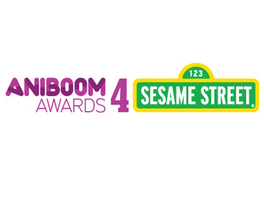U-M Researcher Says Preschoolers Understand the Power of Advertising
March 1st, 2010 According to a new study from Bettina Cornwell at the University of Michigan, “Three to five year olds understand brands .” Preschoolers have the ability to judge products based on popularity and relevance in their lives. The study underscores the importance to monitor advertising to children.
According to a new study from Bettina Cornwell at the University of Michigan, “Three to five year olds understand brands .” Preschoolers have the ability to judge products based on popularity and relevance in their lives. The study underscores the importance to monitor advertising to children.
Marketers, and the companies they represent, are continually trying to figure out how they will cultivate the brand faithful. Even the youngest consumers, including preschoolers are receivers of these messages—but do they understand them? A recent study co-authored by researchers at the University of Wisconsin and University of Michigan reveals young children experience some of the same marketing pressures as young adults and truly do understand the power of branding and advertising.
Knowing when children become vulnerable to advertising helps regulators protect children from marketing pressures, and research shows that children may be influenced by advertising earlier than previously thought. U-M Kinesiology Sport Marketing Professor and co-author of the study, Bettina Cornwell, confirmed that children can possess an emerging knowledge of brands as early as age three.
In the two-part study, published in Psychology & Marketing, the researchers first assessed brand recognition levels in 38 children aged three to five years old. Mainstream brand logos, like Lego and Coca-Cola, were presented to children on a card. In individual sessions, brand names were shown to the children with questions like, “Have you seen this before?” and “What types of things do they make?” The children’s recognition rates were as high as 92 percent for some of the 50 brands tested across 16 product categories. The most commonly recognized brand was McDonald’s, followed closely by other brands of fast food, soda and toys. This showed clearly that children as young as three can readily recognize the brands marketed to them.
The second part of the study tested another 42 children between the ages of three and five. Each child was tasked to place smaller cards with pictures on them on a collage that started with only the parent brand logo. For example, a researcher presented a McDonald’s board and Burger King board and asked the child to place all the smaller picture cards that belonged with McDonald’s (e.g.; French fry box, “drive thru” sign, and Hamburglar figure) on the McDonald’s board and all the Burger King ones on the Burger King board. After scoring was completed, this test found children were more likely to have a developed brand knowledge for brands primarily targeted to them, possibly because they see brand logos each time they open a packaged item or have a vested interest in being able to request the item by name to a parent or caregiver. Moreover, an additional aspect of the study measured the child’s understanding of brand meaning. Young children know that brands communicate. Having particular toys or getting to go to particular restaurants tells something about the brand user even for the very young.
Cornwell said, “Before this study, research suggested that brand symbolism does not develop until age seven or eight. The results in both segments of the study clearly show this can happen much earlier than grade school but it depends on the individual child’s development. We believe when messages are tailored to captivate a child’s attention, information may be more easily processed and stored, therefore increasing a child’s brand understanding.
Anna McAlister, PhD, lead author and post-doctoral student of Cornwell’s at the time of the study, followed with, “This study showed us that some preschool children really do understand the differences between brands like Coke and Pepsi — and at a much earlier age than previously theorized. As we more fully understand how and when children develop brand knowledge, we will know when they should be shielded from advertising pressures.”
The results of this study could not be timelier, given the recent “Let’s Move” nationwide campaign announcement by First Lady Michelle Obama. The “Let’s Move” campaign aims to support nutritional meals in schools with an additional focus on increasing physical activity. “It’s a fact that one in three kids is overweight or obese in the U.S. and society is spending $150 billion per year treating obesity-related illnesses. I think the outcomes of our study help paint the picture that young children really do understand the power of branding and advertising and highlights the need for lawmakers to continue to monitor and regulate advertising to children” said Cornwell.
This study showed children use brand cues to determine what food products will be exciting or which toys will be the most enjoyable, and values associated with items (like food choices) are formed as young as three years old. Cornwell concluded, “There are plenty of three to five year olds basing their drink choices on ‘bubbles and fun.’ It’s clear from the fast food branding segment of this study that we need public policies that address the development of eating habits very early on in a child’s life.”
For more info, go to http://www.kines.umich.edu/








